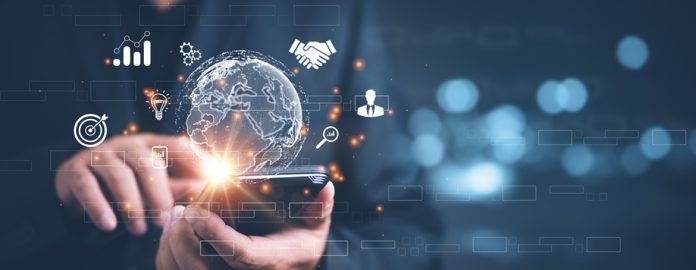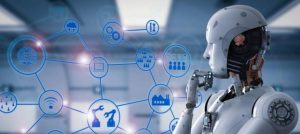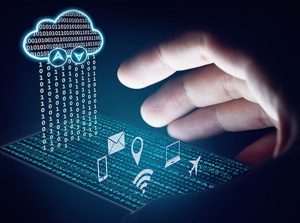Over the last decade, our homes and offices have become overrun with smart appliances such as smart TVs, refrigerators, and other devices. Simultaneously, we have grown accustomed to working alongside smart equipment in the workplace, driving smart cars in smart cities that have a rather advanced networking system due to IoT.
1. IoT in Industrial Production
The Industrial Internet of Things (IIoT) currently offers manufacturing professionals performance, efficiency, lower operational costs, and a secure working environment.
According to predictions, the IIoT will continue converting conventional manufacturing into productive automated factories with adaptable supply chains and high-quality goods in 2023. Enterprise software built on the IIoT enables the replacement of normal manual
2. Healthcare
IoT technologies are already widely used in the healthcare industry to monitor medical devices and evaluate patients’ health problems in real-time, against the context of the growth of telehealth. The adoption of automated medicine dosage, intelligent wearables, monitoring devices, and other IoT-connected diagnostic supplies will continue to grow. The ability of healthcare practitioners to keep tabs on patients’ conditions away from the hospital or doctor’s office is one of the major technological shifts. This permits round-the-clock treatment and frees up important resources for patients who require emergency assistance.
Speaking of the application of IoT in the commercial healthcare industry, the introduction and gradual upgradation of wearable technology enable everyone to learn more about their own health and wellness, which again will help relieve the burden on the current healthcare systems by enabling us to seek treatment sooner when something is wrong and learn more about how diet and lifestyle affect our health. In the upcoming year, we may anticipate the release of more devices, such as wearable skin patches, in addition to the already widely available smartwatches equipped with heart rate and oxygen level monitoring sensors.
3. CyberSecurity
IoT gadgets make our lives more simple and easy, but they also expose us to newer and diverse cyberattacks. Simply put, the more linked gadgets we have in our settings, the more possible entry points there are for intruders. Organizations, device makers, and security professionals will intensify their efforts to fend off malicious activity in order to reduce their chances of gaining access to our sensitive data when the number of devices grows in 2023 and beyond.
Since tackling the security issue is essential for ongoing IoT technology, security concerns are at the top of the list of IoT trends for 2023. We may anticipate that IoT devices will soon feature tiered machine-to-machine validation and enhanced authentication with biometric logins.
4. IoT in Artificial Intelligence and Machine Learning
The use of IoT is transforming the commercial landscape of today. IoT is assisting in acquiring a significant volume of data from numerous sources. But gathering, processing, and analyzing the data is difficult due to the volume of data flowing from so many IoT devices.
The intersection of AI and IoT has the potential to completely reshape how businesses, nations, and sectors operate. IoT with AI capabilities produces intelligent machines that mimic human intelligence and assist in decision-making with minimal to no human input.
Condition monitoring, which is effectively used in manufacturing, is an outstanding example of the Internet of Things and machine learning working together.
Companies will be able to make sure that studied data complies with regulations with the use of machine learning. This is crucial for applying IoT to sectors with rigorous regulations, such as the medical, petroleum & gas, and financial management sector.
A further important advantage of machine learning is its capacity to anticipate equipment problems, pinpoint the causes of malfunction, and take preventative measures, which enables businesses to save revenue and cut costs.
Many of us benefit from the convergence of artificial intelligence and IoT every day. We have a bright future thanks to the IoT trends of 2023 that include artificial intelligence and machine learning.
5. IoT in Cloud Computing and Data Storage
A common technique of storing large amounts of data from IoT devices has always been cloud computing, where all data are delivered to the cloud. However, performance constraints like inadequate bandwidth or network speed left businesses perplexed about how to simplify and reduce the cost of data storage and processing.
Edge computing, which is when information is stored and processed locally, on the storage device adjacent to an IoT gadget, or on the edge of the network, will therefore probably become more widely adopted in IoT architecture. The data are delivered to the cloud after being filtered and processed on the edge, which lowers network strain and allows quick operation of an IoT device.
The Promising Future of IoT
IoT has the ability to have an infinite future. Greater network flexibility, incorporation of artificial intelligence (AI), and the ability to install, operate, coordinate, and protect a range of applications at hyper-scale will expedite the development of the commercial internet. The potential lies not only in concurrently connecting billions of devices but also in utilizing vast quantities of useful data that can streamline a variety of corporate operations.
Service providers will increasingly enter the IT and web-level sectors, creating entirely new sources of revenue, as networking and IoT platforms improve to tackle these difficulties via enhanced bandwidth and AI.













